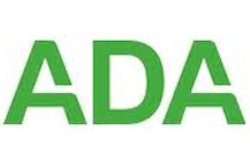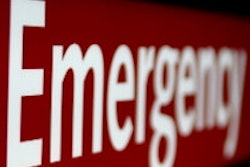
A national dental crisis is causing pain and suffering to millions of children and adults while wasting millions of dollars as underserved people turn to hospital emergency rooms (ERs) for care, witnesses told a U.S. Senate subcommittee today.
Sen. Bernard Sanders (I-VT) called the hearing, which was held before the U.S. Subcommittee on Health, Education, Labor & Pensions. He also submitted the Comprehensive Dental Reform Act of 2013, which aims to expand dental coverage, create new access points, enhance the workforce of dental professionals, improve education, and provide funding for new research. It is a revised version of the Comprehensive Dental Reform Act of 2012.
Committee members heard horror stories of parents pleading for help to get care for children crying from painful toothaches, restrictive state laws that prevent dental therapists from providing care, exorbitant costs for dental care and dental school tuition, and low Medicaid reimbursement rates.
“We are paying for an inefficient, unjust system.”
Sanders cited the staggering numbers of children, poor adults, seniors, immigrants, and rural residents with little or no access to dental care. Improvements to healthcare delivery programs, approving new workforce models, increasing Medicaid reimbursements, and changing state laws will help lessen suffering and also save the country money, according to the senator.
"We are paying for an inefficient, unjust system," he said.
Millions of people live in cities where they can't find care even if they have insurance, Sanders noted.
"People are in agony, and their only alternative is the ER," he said.
Among the main problems:
- More dentists are retiring than are graduating from dental school.
- Dental insurance covers only a small portion of most common dental treatments.
- There is a dire shortage of dentists who accept Medicaid patients.
- There are wide variations in fees charged by private practitioners, including some who charge double for regular procedures.
Sanders recalled a recent free dental clinic in Virginia, similar to many held around the country, where people waited in line all night to get care.
"It looked like a third- or fourth-world country," he said, "It was hard to believe it was the U.S."
The U.S. already pays huge sums through ER visits, lost wages, and productivity issues related to lack of dental care, Sanders emphasized.
"We're wasting huge amounts of money. If we expand access, it's costly, but if you don't, it's hugely more expensive," he said, noting that it costs 10 times more for ER costs than providing care in health clinics.
Depressing statistics
Witnesses who testified included academics, community health clinic directors, and a social worker who reported the dire straits of the poor who are trying to get dental care and also working Americans who can't afford expensive procedures, even if they have dental insurance.
Frank Catalanotto, DMD, a professor of community dentistry at the University of Florida College of Dentistry and a member of Oral Health America's board of directors, cited depressing statistics: Dental care is down 10% among the poor, 60% of Medicaid children are not getting preventive services, and ER visits have risen 16% to 830,000 visits per year.
"Children in pain cannot learn," Dr. Catalanotto said. He noted a 2008 study showing that 61,000 patients had been hospitalized for preventable dental infections and 66 people had died from them.
In addition, dental school tuition and dental equipment make dentists a very expensive part of the healthcare team, Dr. Catalanotto said, adding that high-quality care is available to those who can afford it.
Low reimbursement rates "significantly reduce access to care," he said. Dr. Catalanotto lauded the work done by dental volunteers but said "philanthropy is not a healthcare system."
He criticized restrictive state dental laws that "don't protect health and impede access to care."
One solution is new workforce models, such as dental therapists who can perform preventive services and limited restorative care, Dr. Catalanotto said.
"They are inexpensive to educate, cost-effective to hire, and they are safe practitioners, no matter what you hear," he noted, "but they're being blocked by restrictive dental practice acts."
Dr. Catalanotto noted that a shift in organized dentistry leadership in the last few years has called more attention to access issues. "But they need to lobby equally as hard for access as they do for business issues," he said.
Committee member Sen. Al Franken (D-MN) said he's been to Alaska several times and talked to Minnesota residents who train and hire dental therapists.
"I'm absolutely convinced this is a cost-effective, safe model to provide care to people in need," he said. "They can do simple procedures, they're inexpensive to educate, and they go back to care for underserved communities. It's a wonderful solution."
Some 15 to 20 states are trying to pass laws approving dental therapists, according to Franken. But he noted that a health service law was revised that prevents the states from using federal funds to study the issue.
"This is a travesty," he said. "We need people who are more likely to go back to where they live to practice."
Real-world stories
Greg Nycz, director of the Family Health Center in Marshfield, WI, recalled serving on the state's dental society board when he got a call from a distraught woman.
"It was a young mother failing to hold back tears as her child screamed in pain," he said. "She was sobbing and had called over 30 dental offices trying to stop her child's pain."
He said many young dentists who work in clinics are "daunted by the task" of treating people with "horrible dental disease." One dentist left the Family Health Center after six months, saying he was "not prepared for this kind of work," Nycz said.
Cathi Stallings, a social worker in Falls Church, VA, called dental care a "luxury that many can't afford." She told of not being able to afford care for herself because of exorbitant costs.
"I spent many dark hours worrying and tried to get a bank loan for a bridge," Stallings said. And although her periodontist offered her a discount, she still can't afford it because her dental insurance has a $1,200 per year cap and doesn't cover crowns.
She spent a night on the sidewalk waiting to get into a Maryland Mission of Mercy clinic before being told it was full and she would have to come back the next day. But when she did get in, she couldn't get the treatment she needed.
"There were men and women, every race, creed, and color in dire need, hoping to be helped," Stallings recalled. "It was truly heartbreaking to see all of us standing together in line waiting."
She told of many clients with severe dental problems who must wait for months to be seen. Many mentally ill patients take medications that cause dry mouth and eventually get abscesses, but, like many, can only get extractions under Medicaid.
Debony Hughes, DDS, who runs the dental health program and the Deamonte Driver Dental Project in Cheverly, MD, told a similar story of people waiting overnight to get care at a Mission of Mercy clinic.
"Patients should not have to endure such conditions to get oral care," she said.
Dental school graduates often are saddled with more than $200,000 in debts, Hughes pointed out, citing the need for more loan repayment programs to help dental students.
And dental clinics need to spend more than $500,000 for equipment, plus pay for staff salaries, insurance, and lab supplies, she emphasized. "The costs are staggering," Hughes said, noting that fixing her x-ray equipment cost $295 an hour just for labor fees.
The ADA, which did not attend the meeting, released a statement commending Sen. Sanders' efforts to increase access to dental care but said the proposed solutions "have been too few and too narrow in scope."
"We hope that this latest hearing is a jumping off point for Congressional action that leads to more coverage -- and more care -- for those who need it most," the ADA wrote.
The ADA emphasized three general areas for action:
- Providing care now to people already suffering with untreated disease
- Strengthening and expanding the public-private safety net to provide more care to more Americans
- Bringing dental health education and disease prevention into communities
"Healthy teeth and gums aren't a luxury -- they're essential. We recognize that dentists alone cannot solve the nation's dental health crisis. Federal, state, and local governments must be part of the solutions," the ADA said.



















